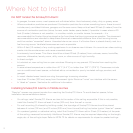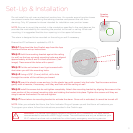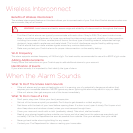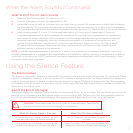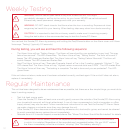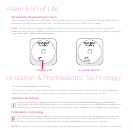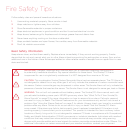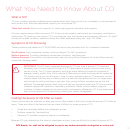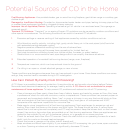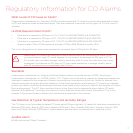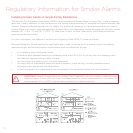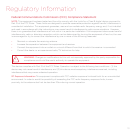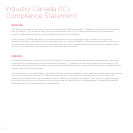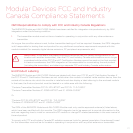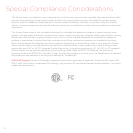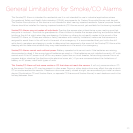16
Potential Sources of CO in the Home
Fuel-Burning Appliances: Like portable heater, gas or wood burning fireplace, gas kitchen range or cooktop, gas
clothes dryer.
Damaged or Insufficient Venting: Corroded or disconnected water heater vent pipe, leaking chimney pipe or flue,
or cracked heat exchanger, blocked or clogged chimney opening.
Improper Use of Appliance/Device: Operating a barbecue grill or vehicle in an enclosed area (like a garage or
screened porch).
Transient CO Problems: “Transient” or on-again-off-again CO problems can be caused by outdoor conditions and
other special circumstances. The following conditions can result in transient CO situations:
1. Excessive spillage or reverse venting of fuel appliances caused by outdoor conditions such as:
• Wind direction and/or velocity, including high, gusty winds. Heavy air in the vent pipes (cold/humid air
with extended periods between cycles).
• Negative pressure differential resulting from the use of exhaust fans.
• Several appliances running at the same time competing for limited fresh air.
• Vent pipe connections vibrating loose from clothes dryers, furnaces, or water heaters.
• Obstructions in or unconventional vent pipe designs which can amplify the above situations.
2. Extended operation of unvented fuel burning devices (range, oven, fireplace).
3. Temperature inversions, which can trap exhaust close to the ground.
4. Car idling in an open or closed attached garage, or near a home.
These conditions are dangerous because they can trap exhaust in your home. Since these conditions can come
and go, they are also hard to recreate during a CO investigation.
How Can I Protect My Family From CO Poisoning?
A CO Alarm is an excellent means of protection. It monitors the air and sounds a loud alarm before Carbon
Monoxide levels become threatening for average, healthy adults. A CO Alarm is not a substitute for proper
maintenance of home appliances. To help prevent CO problems and reduce the risk of CO poisoning:
• Clean chimneys and flues yearly. Keep them free of debris, leaves, and nests for proper air flow. Also, have
a professional check for rust and corrosion, cracks, or separations. These conditions can prevent proper air
movement and cause back-drafting. Never “cap” or cover a chimney in any way that would block air flow.
• Test and maintain all fuel-burning equipment annually. Many local gas or oil companies and HVAC
companies offer appliance inspections for a nominal fee.
• Make regular visual inspections of all fuel-burning appliances. Check appliances for excessive rust and
scaling. Also check the flame on the burner and pilot lights. The flame should be blue. A yellow flame
means fuel is not being burned completely and CO may be present. Keep the blower door on the furnace
closed. Use vents or fans when they are available on all fuel-burning appliances. Make sure appliances are
vented to the outside. Do not grill or barbecue indoors, or in garages or on screen porches.
• Check for exhaust back-flow from CO sources. Check the draft hood on an operating furnace for a back-
draft. Look for cracks on furnace heat exchangers.
• Check the house or garage on the other side of shared wall.
• Keep windows and doors open slightly. If you suspect that CO is escaping into your home, open a window
or a door. Opening windows and doors can significantly decrease CO levels.



